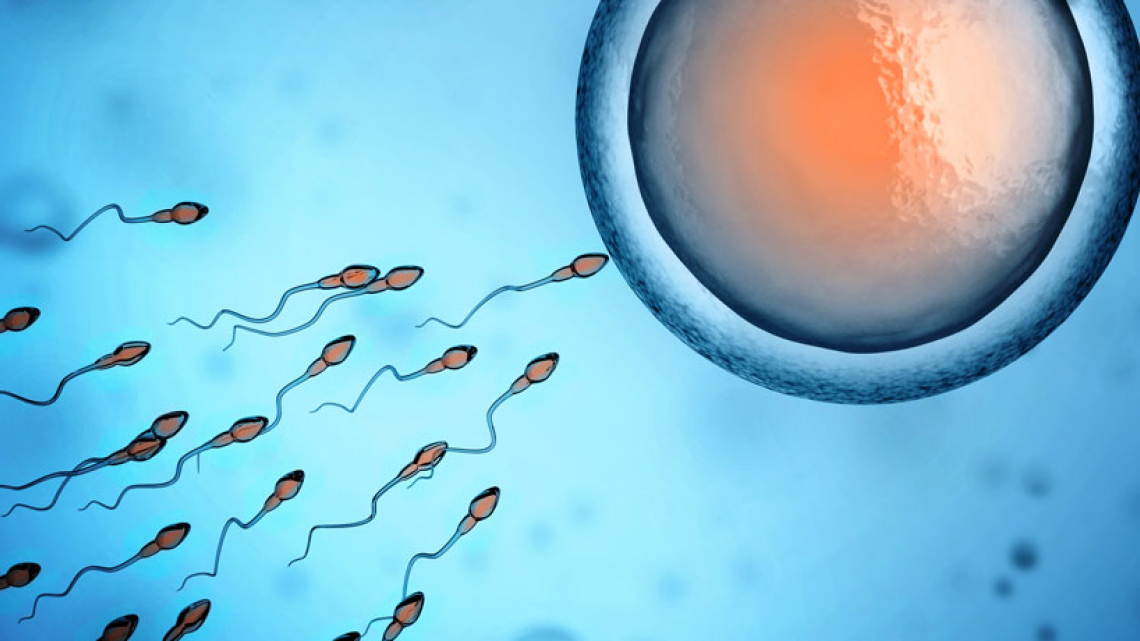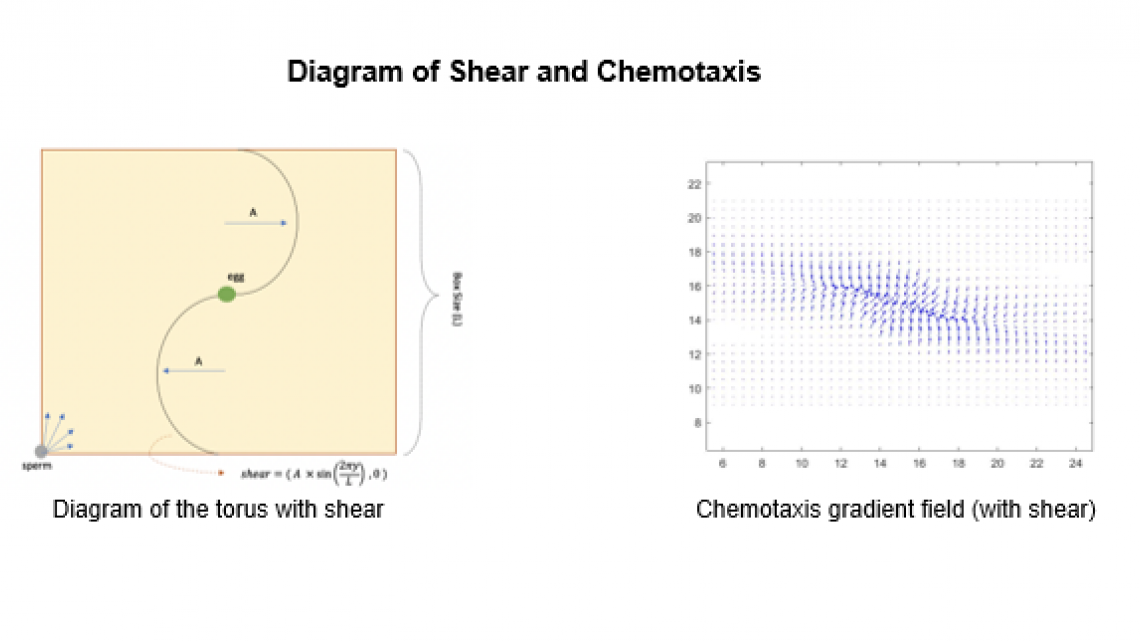Project leaders: Alexander Kiselev and Siming He
Project managers: Yishu Gong and Omar Melikechi
Team members: Despina Chouliara, James Lim, Keenan Powers
This project has produced the following paper:
Despina Chouliara, Yishu Gong, Siming He, Alexander Kiselev, James Lim, Omar Melikechi, and Keenan Powers, Hitting time of Brownian motion subject to shear flow, Involve, a Journal of Mathematics volume 15 (2022), number 1, 131-140.
Inspired by recent experimental studies of cell motility and locomotory behavior in fluid environments, our project models the interaction between a sperm and an egg in a fluid medium. More specifically, we are concerned with how shear flow and chemotaxis affect the expected time it takes for a sperm dispersing randomly according to Brownian motion to reach an egg. We have assumed the interaction takes place on a 2 dimensional torus and consider a shear flow with a strength that varies according to a sine wave. Apart from shear, chemotaxis is another key factor of sperm-egg interactions we have included in our model, which refers to cell movement toward chemo-attractants. First, the egg releases chemical signals which the sperm picks up, then the sperm measures the relative concentration of chemotaxin chemicals and as a result starts moving along a gradient of increasing chemical concentration.
Our project concluded that both shear and chemotaxis reduce the time it takes for the sperm to reach the egg. We observe that as shear increases, the expected time decreases. This effect is most pronounced for the shear rates up to 1-2/s-1, and as the shear strength goes to infinity the expected time converges to the expected time of one-dimensional Brownian motion. Now let us consider both chemotaxis and shear in our model; since the minimizing effects of chemotaxis are limited by the spread of the sperm, we believe shear can help to further decrease the expected hitting time. However, if the shear is too large, the effects of chemotaxis may be mitigated. Therefore, we theorize there will be an optimal shear that minimizes the expected time for the sperm to hit the egg. We expect to finalize numerical simulations on this more complex model in the near future.




